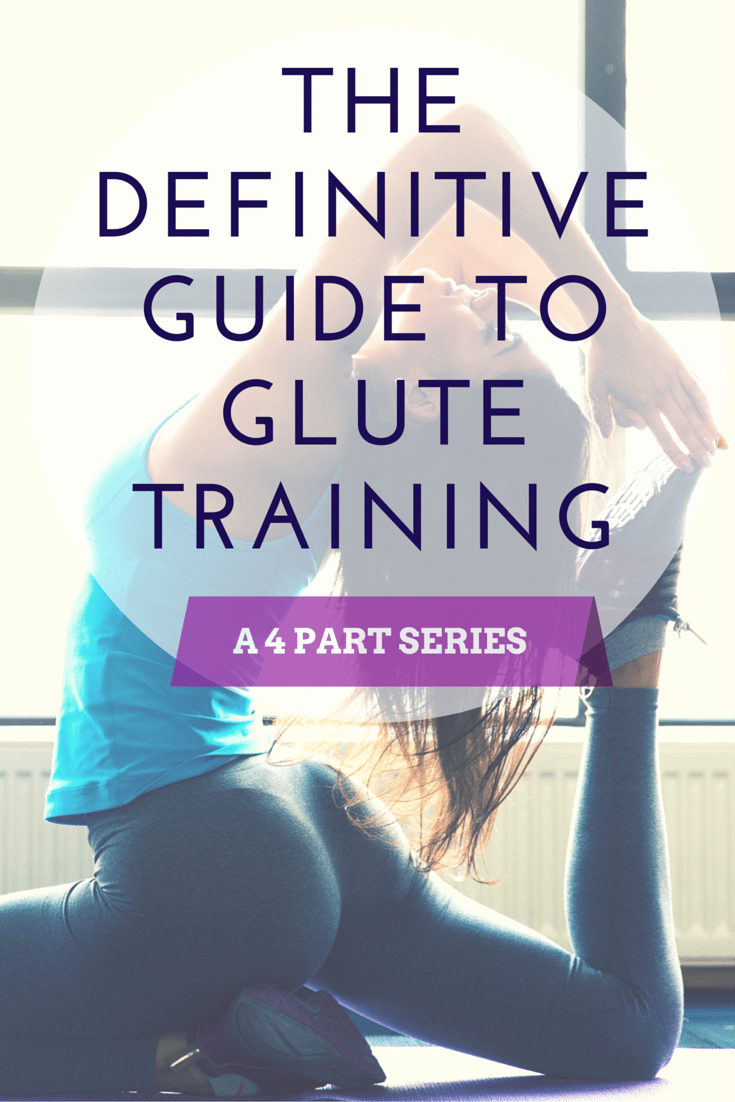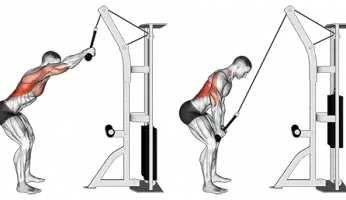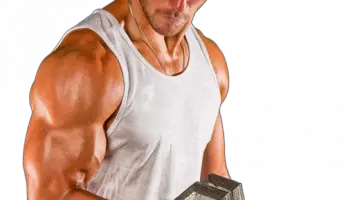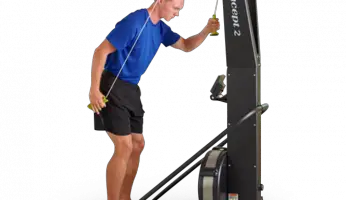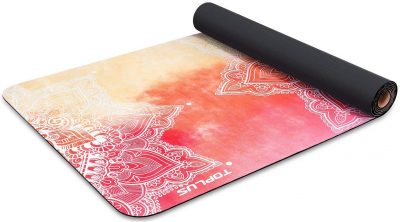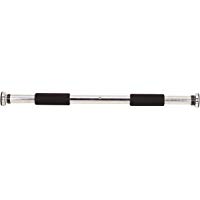The Definitive Guide to Glute Training – Part 4
updated January 1, 2019
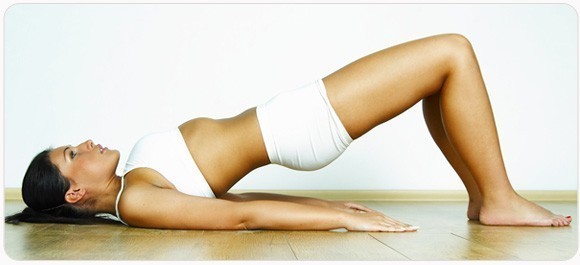
Source: www.spscgym.com
QUAD DOMINANT MOVEMENT
Quad dominant exercises are critical to complete development of the glutes. These exercises invariably involve some variation of a squatting movement. This allows the knee joint to move through a full range of motion, with resultant hip flexion and stretching of the glutes. Quad dominant movements best stretch the glutes under a heavy resistance. You’ll find that these movements will cause muscular soreness in the glutes more than any other.
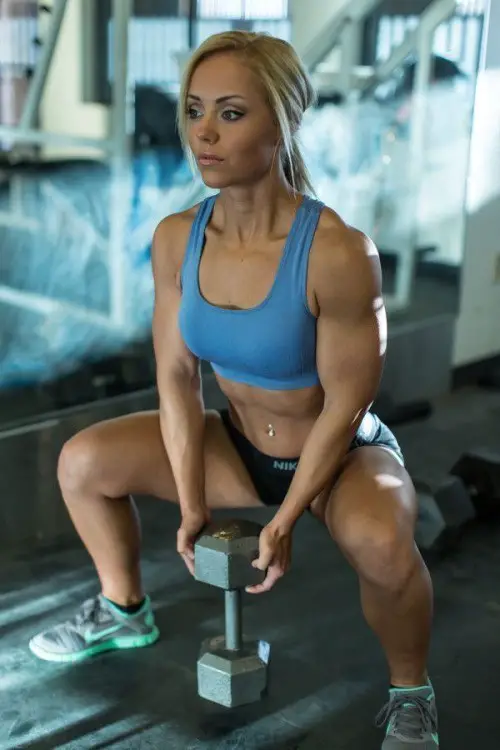
Source: http://pinterest.com
Many people who perform squat based exercises don’t use their hips. As a result, there is a tendency to transfer the resistance forward while bending at the knees when squatting, as opposed to sitting back and and absorbing the load with the hips. People rise up on their toes. They also fail to go down deeply when performing lunges. They then do all sorts of things to compensate for the failure to use their hips. If you want to do justice to your glutes, you need to push through your heels. When you do, you will feel your hips producing the power of your lifts.
Not everyone is built to squat. Some people are natural squatters while others really struggle to come to grips with the exercise. It’s important to persevere to master the mechanics of the movement to ensure that you are able to maximise the effect on the quads and the glutes.
Soreness comes with quad dominant exercises, but soreness is not the prime requisite for size, shape and strength. Too much soreness will actually halt your gains. If you pulverize your muscles to the extent that you can hardly move, you won’t be able to do justice to your next workout. The best policy is to work your glutes regularly with a range of exercises.
Incorporating quad dominant movements in your routine is an effective way to curb knee pain. When the quads are made stronger, and the hips are trained to play their part in the lift, the amount of stress on the knee joint is greatly reduced. The knee will be able to correctly track over the foot, alleviating stress on the knee.
Quad dominant movements will also make you a more effective sportsperson. Whether your chosen discipline involves running, jumping, weaving or lunging, the quads are critical to your lower body movement. Training with quad dominant exercises will provide you with glute strength to burn when you are in a deep squatted positions. This will greatly assist in the absorption of impact when coming down from a jump.
Of course, the squat is the king of lower body exercises. The squat demands that the core be stable, especially around the erector spinae. It will develop great quad, as well as hip, strength. It will also encourage improved joint mobility through the lower body. To fully engage the glutes, though, you need to add in movements like deadlifts and hip thrusts.
THE EXERCISES
Bodyweight High Box Squat
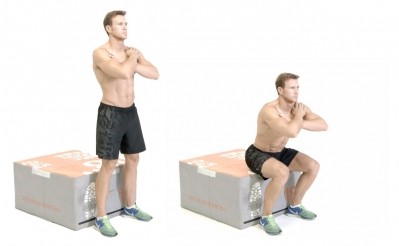
Source: www.menshealth.co.uk
The bodyweight high box squat is a great squat variant that trains the body to sit back and use the hips more while squatting. People with knee problems will also benefit from this variation. Obviously, the higher you position the box, the easier the exercise is. Gradually lower the box over time as you become more adept at the movement.
How to Do it?
- Position yourself in front of a bench that comes to about the level of your knees. Your feet should assume a wide stance, with the toes pointed out at a 45-degree angle.
- Cross your arms to touch the opposite shoulder.
- Inhale deeply, then descend into a squat. Make sure that your glutes are extended back. The tibia should be almost vertical. You do not want your knees to move forward.
- Keeping the knees out, go down until your glutes touch the bench. After a momentary pause, ascend out of the squat. Contract your glutes at the top of the movement before repeating on the next rep.
Tips for Optimum Performance
- Keep the chest up and your back arched at all times.
- Push your knees out so that they track over your toes.
- Keep your weight on your heels.
- Sit way back in this exercise, and make sure that the tibia is upright. This will prevent your knees from moving forward.
- Contract the glutes at the top point of the movement.
Bodyweight Low Box Squat
This is a great movement to make sure that you squat down to a sufficient depth when you squat. The exercise also develops strength and gives much better form in the bottom part of the squat. Unlike with the high box squat, the low box squat requires you to sit back and down. Your knees should move forward a little. The load is equally shared between the knees and the hips. The stance is not quite as wide as with the high box squat.
How to Do it?
- Position yourself in front of a bench that is positioned below the levels of your knees. Maintain a shoulder-width stance. Your toes should be turned out at a 45 degree angle.
- Cross your arms so that your fingers are touching the opposite shoulder.
- Inhale deeply, then descend. Make sure to keep your upper body as upright as possible.
- Force your knees out as you descend down into the squat until you hit the bench.
- Pause briefly on the bench while maintaining a neutral spine.
- Ascend out of the squat, contracting the glutes in the top position.
- Return to the start position.
Dumbbell Goblet Squat
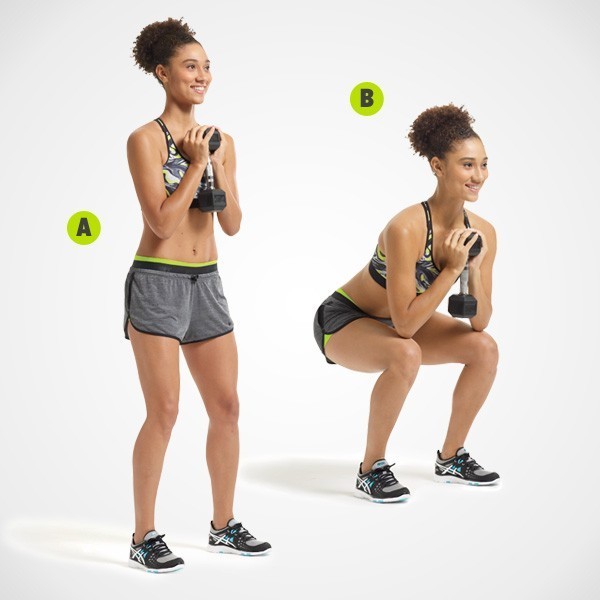
Source: www.womenshealthmag.com
This is a great exercise for beginning and intermediate trainers. Use either a kettlebell or a dumbbell which you hold by the end plate. Hold the resistance at your chest level.
How to Do it?
- Stand with feet shoulder width-apart. You should turn your toes slightly outward as you perform this movement.
- Stand up straight, with the resistance held at chin level.
- Descend directly down, keeping the upper body upright. Try not to lean forward. Push the chest out and keep it upright throughout the movement.
- Descend down until your hip joints are lower than your knees. Push the knees outward as you complete the exercise.
- As you ascend, focus on pushing through the heels. Keep the knees out so that they don’t cave inwards as you rise out of the squat.
- Return to the start position.
Tips For Optimum Performance
- Keep the chest up and chin tucked in. The neck should be in line with the rest of the spine.
- Keep your arms close to your body as you descend into the squat.
- Descend directly down as you force your knees out over your toes.
- Keep the lower back arched throughout the movement.
- Use the glutes to push up from the bottom position.
Dumbbell Full Squat
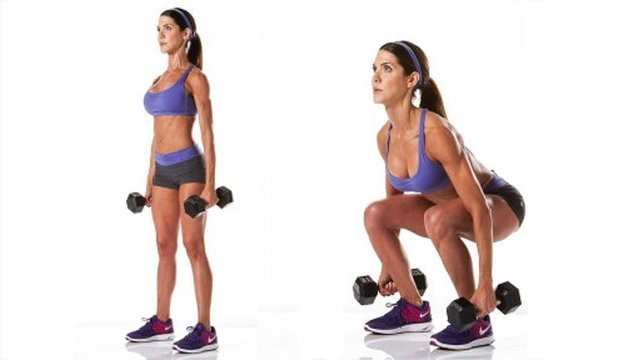
Source: www.reach-yourpeak.com
This a squat variation that a lot of people struggle with. It is, however, an effective way to work the quads and glutes.
How to Do it?
- Stand with your feet shoulder width apart. Your toes should be positioned at a 45 degree angle.
- Hold a dumbbell in each hand at your sides. Your palms should face in towards your thighs.
- Begin the movement by hinging at your hips. Start the exercise from the hips, then follow with your knees.
- Descend into a squat to the point that your hips come down below the knees. Push out through the knees throughout the exercise.
- Ascend by pushing up through the hips. Keep the knees out as your rise.
- Return to the start position.
Barbell Half Squat

Source: www.volleyballmag.com
If you have an injury that prevents you from doing a full squat, this movement is a good alternative. You’re also able to lift more weight when you don’t go all the way down.
How to Do it?
- Stand with feet a little wider than shoulder width apart.
- Step under a loaded squat rack to position the bar across your upper back just above your shoulder blades.
- Inhale deeply and go down into a squat by sitting back and down. Go down until your thighs hit an angle of about 110 degrees. Parallel is too far.
- Ascend out of the squat, making sure to contract the glutes in the top position.
Tips For Optimum Performance
- Sit back and absorb the load with your hips. Feel the glutes contributing to the movement, not just the quads.
- Keep your weight on the heels.
Barbell Full Squat
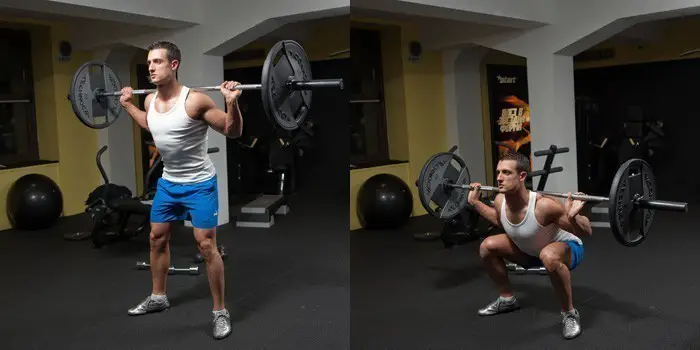
Source: www.weighttrainingexercises4you.com
The barbell full squat is a foundational movement in all glute programs. For maximum glute activation you need to squat down completely. Women generally find this more difficult than men. This is often because of limited flexibility at the ankles, a restricted movement of the hips and spinal stiffness. If you have a weak posterior chain (the muscles at the back of your body), you may also have difficulty with the full squat.
It is a good idea to work to improve your mobility and stability while squatting. By doing so you will find that your pattern of squatting feels more natural and in control. This will, in turn, allow you to add more resistance. For some people, however, deep squats are not comfortable. If this is the case with you, just squat to parallel.
Full squats hit the glutes at the bottom the exercise. In this position the hips are flexed and the glutes are stretched.
How to Do it?
- Position yourself in front of a loaded squat rack with a stance just wider than shoulder width. Your feet should be at a 30 degree angle.
- Position yourself under the bar so that it rests above the spine of the scapula.
- Inhale deeply, while looking straight ahead. Maintaining an upright chest and arched lower back, go down into the full squat position.
- Do not allow your knees to track in as you go down. They should be over the toes throughout the movement.
- Actively resist the temptation to round your lower back and tilt your pelvis back as you perform the descent.
- Push through the heels.
- As you descend into the full squat, keep your chest up and your knees out. The back must maintain its arch.Keep the feet flat on the floor throughout the movement.
- Ascend out of the squat, contracting the glutes as you get to the top position.
- Return to the start position.
Tips for Optimum Performance
- Keep the chest up and maintain a good lower back position.
- Push your knees out so that they track over your toes.
- Keep your weight on your heels.
- Sink your hips straight down between your toes.
Barbell Front Squat
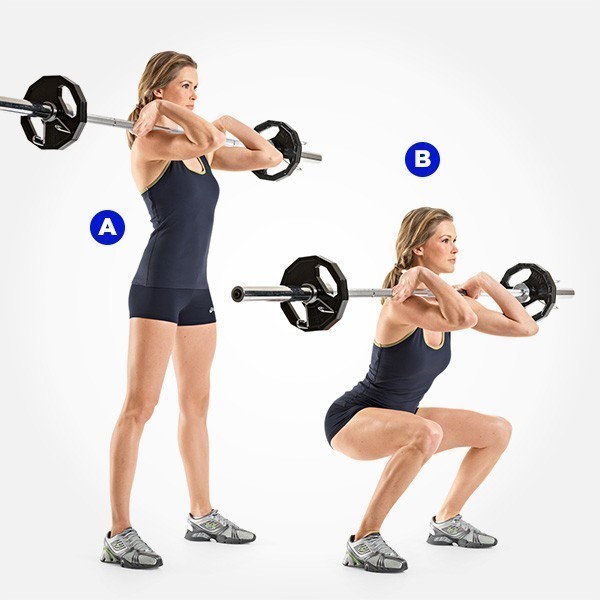
Source: www.womenshealthmag.com
The barbell front squat forces you to maintain an upright torso. This prevents spinal misalignment and injury, yet is still incredibly beneficial for the thighs and glutes. Many people find this version to be safer than the back squat. At the start it may feel a little uncomfortable, but this will lessen as you get used to the front squat positioning.
How to Do it?
- Position yourself in front of a loaded squat rack. Your feet should be slightly wider than shoulder width and at a 30 degree angle.
- Grab the bar with an underhanded grip at shoulder width and lift it back to form a shelf with the front of your deltoids. Position the bar on your shoulders and across your neck.
- With high elbows, take a step back from the squat rack. Squat down until the hips joints are below your knees. Push your knees out over your toes.
- Once you reach the full squat position (or parallel if this is more comfortable for you), push through the heels to ascend out of the squat. Make sure that your torso is upright throughout.
- Return to the start position.
Tips for Optimum Performance
- Keep the chest up, and ensure that you have a good arch in the lower back throughout the movement.
- Make sure that the weight is resting on your shoulders as opposed to the wrists and hands.
- The elbows need to be high throughout the exercise and tucked in, not allowing the elbows to flare.
- Keep the knees out so that they track over the toes.
- Push through the heels.
- Sink the hips directly down between the knees.
Zercher Squat
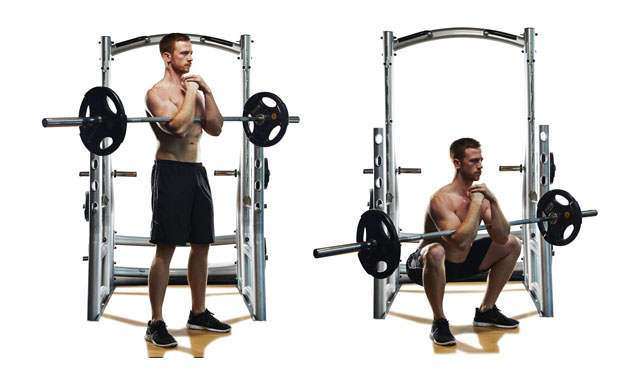
Source: www.stackhealthy.com
The Zercher Squat is the squat variation that causes maximum activation of the glute and core muscles. It is also, however, the least comfortable of all the types of squats in this program. That’s because you have to hold the bar in the crook of your elbow. With patience and practice, however, the move will become more comfortable.
How to Do it?
- Position a bar on the squat rack at waist height.
- Move up to place the bar in the crook of your elbows.
- Take a step back and stand upright. You should try to keep the bar as close to your body as possible. Your feet should be slightly wider than shoulder width apart.
- Descend into a squat by sitting back and down. Go down until your hips are below the knees. Push your knees out over your toes.
- Descend down until the elbows make contact with the thighs.
- Return to the start position.
Tips for Optimum Performance
- Keep the chest up all the time, along with an arch in the lower back.
- Push your knees out so that they track over your toes.
- Push from the heels.
- Sit back, and use the hips to do the work.
COMMON SQUATING ERRORS THAT ARE CHEATING YOUR GLUTES
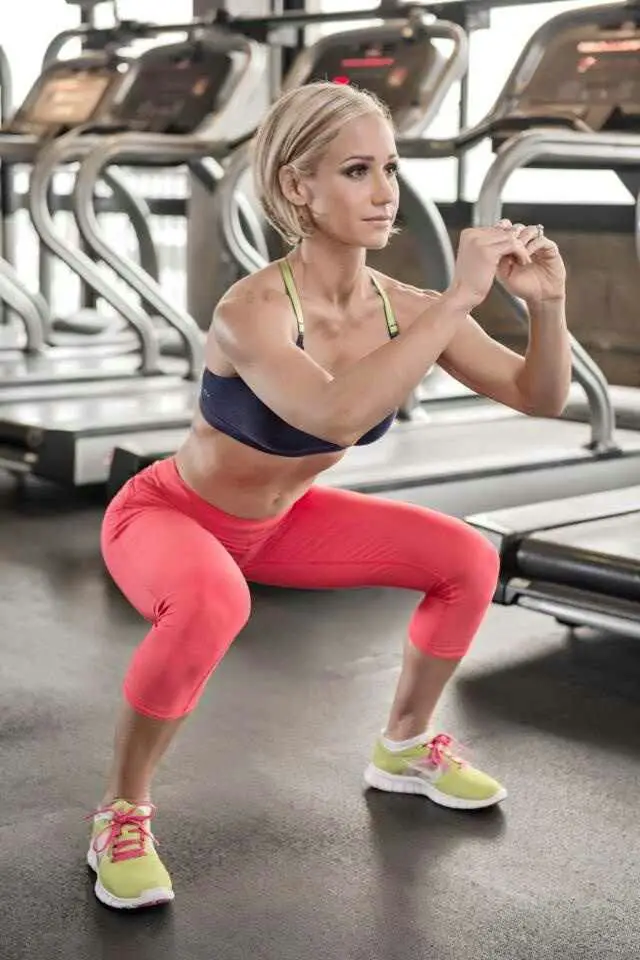
Source: www.pinterest.com
- Breaking at the knees – If you imagine that person behind you has a rope around your hips and is pulling you back, it will be easier to start the movement from a hip break, rather than at the knees.
- Pushing through the toes – You must push through the heels on order to generate the glute neurons and to generate sufficient force to do the job properly.
- Round the Lower Back – You must maintain an arched back all the time when squatting. There is a tendency to round the back at the bottom of the squat. This happens because there is not enough hip flexion mobility and the pelvis is pulled into a tilt position.This has the flow on effect of putting the spine out of alignment. Keeping the spine in a neutral position will avoid these problems.
- Knees Caving In – Valgus collapse occurs when the knees buckle in toward each other. Weak glutes and external hip rotation are the cause of this very common problem. To correct it, you have to consciously force your knees out. This particularly important at the bottom of the movement.
- Faulty Neck Alignment – Looking up while squatting will cause the neck to tilt and get out of alignment. Maintain a neutral neck position, looking straight ahead to keep your neck in line with your torso.
- Lifting Onto The Toes – Rising up onto the toes is very common among squatters, especially at the bottom part of the movement. Tight plantar flexors often give rise to this tendency. To overcome it, consciously push from the heels. You might also consider purchasing a pair of squatting shoes. These feature a three quarter inch raised heel to get you in the ideal alignment to perform a squat. Click here to read our review of best shoes for squats and deadlifts.
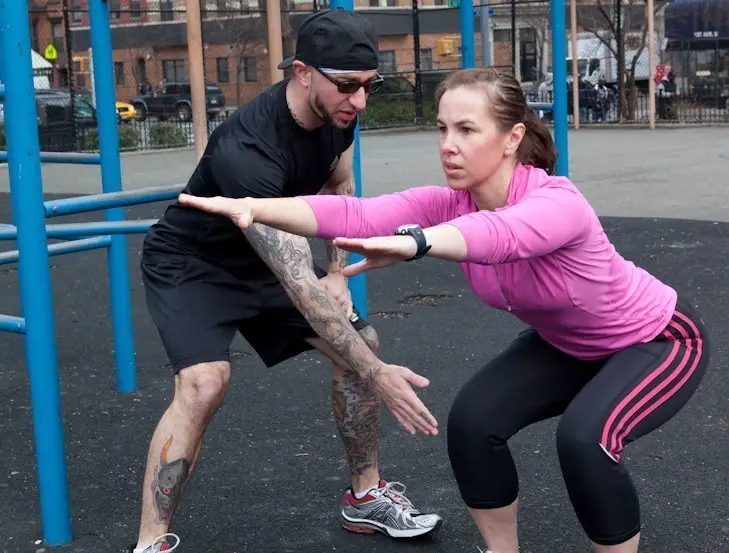
Source: www.alkavadlo.com
This is the last part of the glute training guide, check back to first part, second part and third part if you haven’t gone through them yet.
